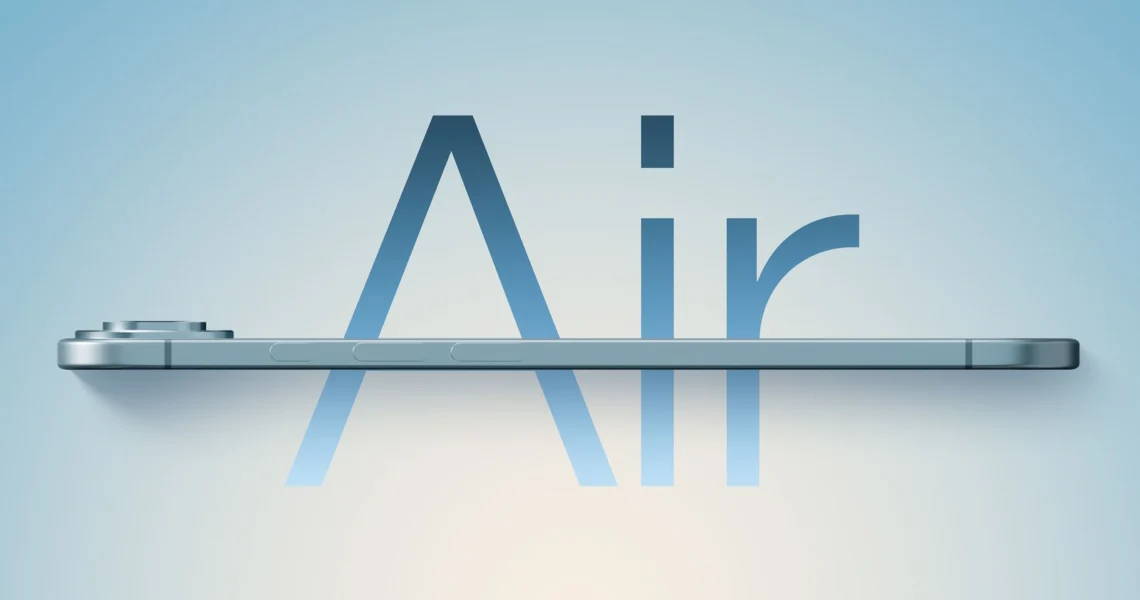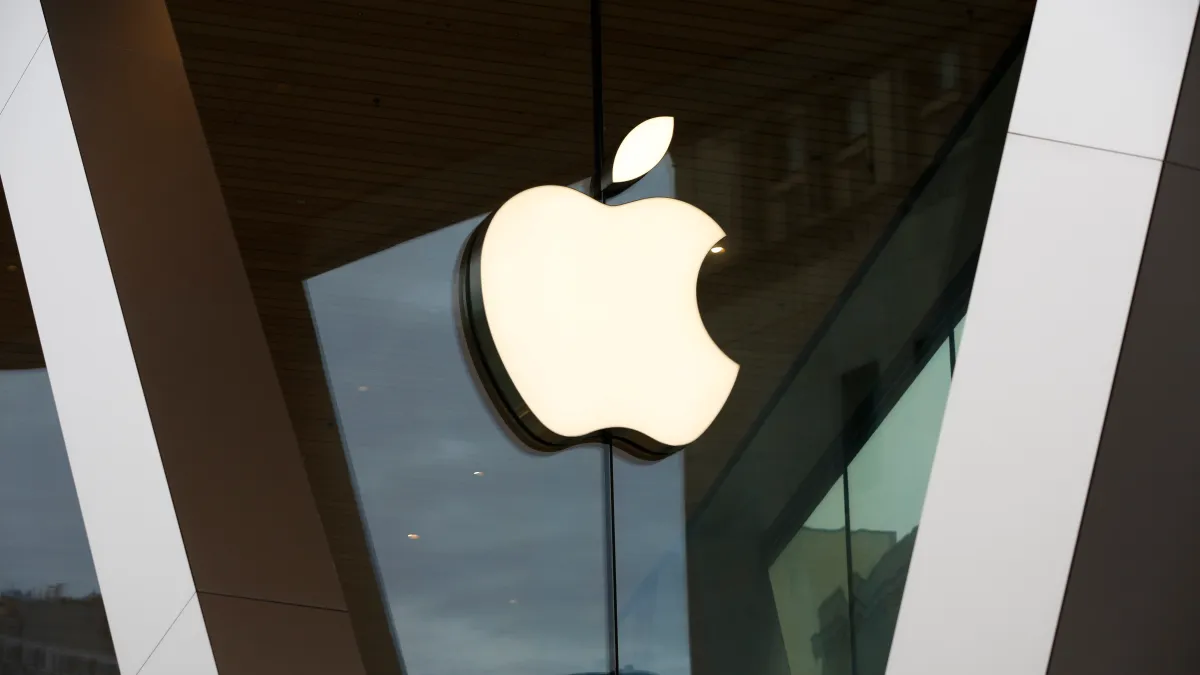iPhone 17 Air: Unexpected Titanium Frame
The rumored adoption of a titanium frame for the iPhone 17 Air presents a fascinating design conundrum, challenging conventional expectations for Apple’s product naming conventions and material usage.
The “Air” branding has historically signified devices that prioritize extreme thinness and lightness, features where aluminum typically holds an advantage over titanium. Aluminum is renowned for its low density, making it an ideal choice for minimizing device weight.
However, titanium, while denser than aluminum, boasts exceptional strength-to-weight ratios and superior hardness. This makes it significantly more resistant to scratches, dents, and bending. If the iPhone 17 Air is indeed aiming for an “ultra-thin” profile, as widely rumored, then structural integrity becomes a paramount concern.
A very thin aluminum frame might be more susceptible to flexing or damage from everyday drops and pressures. In this scenario, the added strength of titanium could be necessary to ensure that the iPhone 17 Air’s slim chassis remains robust and durable over its lifespan. This would represent a strategic engineering choice to balance aesthetics with practical resilience.
Another possibility, as hinted by a prior report, suggests a blend of materials. Last year, another prominent Apple analyst, Ming-Chi Kuo, proposed that the iPhone 17 Air’s frame would utilize both titanium and aluminum. This mixed-material approach could allow Apple to leverage the best properties of both. For instance, critical stress points might be reinforced with titanium, while less stressed areas could use lighter aluminum to keep the overall weight in check. This hybrid design could offer a compromise, achieving both desired lightness and necessary durability.
Apple is renowned for its meticulous engineering and thoughtful material science. The company almost certainly has specific reasons for any material choices it makes, especially for a high-volume product like the iPhone. These reasons often involve a complex interplay of cost, manufacturing feasibility, weight, feel, thermal dissipation, and structural integrity.
The precise rationale behind the iPhone 17 Air’s potential titanium frame will likely remain a closely guarded secret until Apple’s official iPhone 17 event in September. During such keynotes, Apple typically elaborates on its design philosophies and the technological advancements that justify its material selections, providing a deeper understanding of its strategic choices.
A Notable Material Shift for Pro Models
For years, Apple has consistently reserved its most premium and durable frame materials for its highest-end iPhone models. Since the introduction of the iPhone X in 2017, all of Apple’s flagship Pro models have featured either stainless steel or titanium frames. Stainless steel, used in models up to the iPhone 14 Pro, provided a premium feel and high durability. More recently, with the iPhone 15 Pro series, Apple transitioned to titanium frames, further enhancing durability while simultaneously reducing weight compared to stainless steel. This established a clear hierarchy of materials, differentiating the Pro lineup from the standard aluminum-framed iPhones.
Therefore, the rumor from Jeff Pu that the iPhone 17 Pro and iPhone 17 Pro Max will revert to aluminum frames this year represents a truly notable and surprising change. This would be a significant departure from Apple’s long-standing design strategy for its top-tier devices. If true, it raises several questions regarding Apple’s overall product positioning and material cost management.
Let’s examine Pu’s specific expectations for the upcoming iPhone 17 series:
- iPhone 17: Aluminum frame
- iPhone 17 Air: Titanium frame
- iPhone 17 Pro: Aluminum frame
- iPhone 17 Pro Max: Aluminum frame
This rumored lineup directly contrasts with the material choices seen in the current iPhone 16 series, which continued the premium material trend for its Pro models:
- iPhone 16: Aluminum frame
- iPhone 16 Plus: Aluminum frame
- iPhone 16 Pro: Titanium frame
- iPhone 16 Pro Max: Titanium frame
The purported shift of the iPhone 17 Pro models from titanium back to aluminum would be a highly unusual move. It could imply several things. Perhaps Apple has found a new, more advanced grade of aluminum that offers enhanced durability or a more premium finish while being more cost-effective to produce at scale.
Alternatively, it could signal a re-evaluation of the “Pro” differentiation strategy, potentially moving the primary distinction away from frame material and towards other features like cameras, displays, or processing power. It’s also possible that this is a strategic move to manage production costs, especially if titanium manufacturing proved more challenging or expensive than anticipated for high-volume Pro models.
Such a change would inevitably spark considerable discussion among consumers and tech enthusiasts. Many users value the premium feel and enhanced durability that stainless steel and titanium offer in Pro models. A return to aluminum for the flagship Pro series would likely lead to questions about perceived value and whether this represents a “downgrade” in build quality, even if other components are upgraded. Apple will need to clearly articulate its reasoning if these rumors prove accurate, especially concerning how it maintains the premium appeal of its most expensive iPhones without the previously associated material.
Exploring the “Why”: Possible Rationale for Titanium Air
The decision to potentially equip the iPhone 17 Air with a titanium frame while, surprisingly, reverting the iPhone 17 Pro models to aluminum, invites extensive speculation regarding Apple’s underlying rationale. This isn’t merely a cosmetic choice; material selection for a mass-produced device like the iPhone involves complex engineering, manufacturing, and strategic considerations.
One primary reason for opting for titanium on an “Air” model, despite its typically lighter aluminum counterpart, could be durability in an ultra-thin form factor. If the iPhone 17 Air is indeed designed to be exceptionally thin and light, as the “Air” branding suggests, its structural integrity might become a challenge.
A very thin chassis, especially one made from aluminum, could be more prone to bending or damage from everyday stresses. Titanium’s superior strength-to-weight ratio could provide the necessary rigidity without adding prohibitive bulk. This would ensure the device is not only sleek but also robust enough to withstand typical usage. This engineering decision prioritizes longevity and resilience for a device aimed at portability.
Another possibility involves thermal management. Titanium is known for its excellent thermal properties. In an ultra-thin device, heat dissipation can be a significant challenge, especially with powerful internal components. Titanium might offer a more effective pathway for heat to dissipate, preventing the device from overheating during intensive tasks. This would contribute to sustained performance and user comfort.
Furthermore, Apple might be exploring ways to differentiate its product lineup beyond just “Pro” features. By giving the “Air” model a unique, premium material like titanium, Apple could be aiming to carve out a distinct identity for this new tier of iPhone. This could appeal to users who prioritize a blend of sleek design, enhanced durability, and a lightweight form, even if they don’t require all the advanced camera or display features typically found in the Pro models. It creates a new “premium lightweight” category.
The potential shift of the Pro models back to aluminum could also be multifaceted. It might be driven by manufacturing scalability and cost efficiency. Producing titanium frames at the massive volumes required for all Pro models could be more complex or expensive than anticipated. Aluminum, while less “premium,” is highly mature in Apple’s manufacturing processes, offering consistency and cost benefits. Apple might also have developed new, advanced aluminum alloys that offer enhanced properties (like greater hardness or better scratch resistance) that bridge the gap with titanium in certain aspects, making the aesthetic and tactile difference less pronounced.
Finally, it’s possible this reflects a recalibration of perceived value and brand strategy. Perhaps Apple intends for the “Pro” moniker to primarily denote cutting-edge computational power, camera capabilities, and display technology, rather than relying heavily on the external frame material for differentiation.
By reserving titanium for the “Air” model, it could be creating a new kind of “premium” experience focused purely on physical design and durability in a slim package, while the “Pro” models lead with internal technological prowess. All these possibilities underscore the intricate layers of decision-making involved in Apple’s product development, with the full explanation awaiting the official reveal at the iPhone 17 event in September.
The Anticipation and Official Reveal
The swirling rumors surrounding the iPhone 17 series, particularly the unexpected material choices, have generated significant anticipation within the tech world and among Apple enthusiasts. The constant stream of leaks from prominent analysts like Jeff Pu and Ming-Chi Kuo provides tantalizing glimpses into Apple’s potential future product strategy. However, it is crucial to remember that these are, at this stage, rumors and analyst predictions, not confirmed facts. While these analysts often have strong track records based on supply chain intelligence, official confirmation can only come from Apple itself.
The speculation about the iPhone 17 Air’s titanium frame and the iPhone 17 Pro models’ potential return to aluminum has sparked considerable debate. Consumers are keenly interested in how these material changes might impact durability, weight, aesthetics, and, importantly, the final pricing of the devices. The perceived value of an iPhone is often tied to its premium build, and a shift in material can alter consumer perception, even if technical specifications remain top-tier.
The full picture and the official rationale behind these potential design choices will undoubtedly be revealed during Apple’s highly anticipated iPhone 17 event, traditionally held in September. During this keynote, Apple typically delves deep into its design philosophy, material science, and the technological innovations that underpin its new product offerings. It’s during this event that the company will address questions about durability, performance, and the strategic positioning of each model within the iPhone 17 lineup.
The anticipation is particularly high because these rumored changes are not incremental; they represent a potential fundamental shift in how Apple differentiates its iPhone tiers through material choices. Whether the iPhone 17 Air truly becomes the sole titanium-framed model, or if the Pro models indeed revert to aluminum, the impact on market perception and consumer choice will be significant.
Until Apple’s official announcement, the tech community will continue to speculate, analyze, and eagerly await the unveiling of what could be one of the most intriguing iPhone lineups in recent memory. The balance between premium feel, durability, weight, and cost is always delicate, and Apple’s choices for the iPhone 17 series will reveal its priorities for the next generation of its iconic smartphone.





